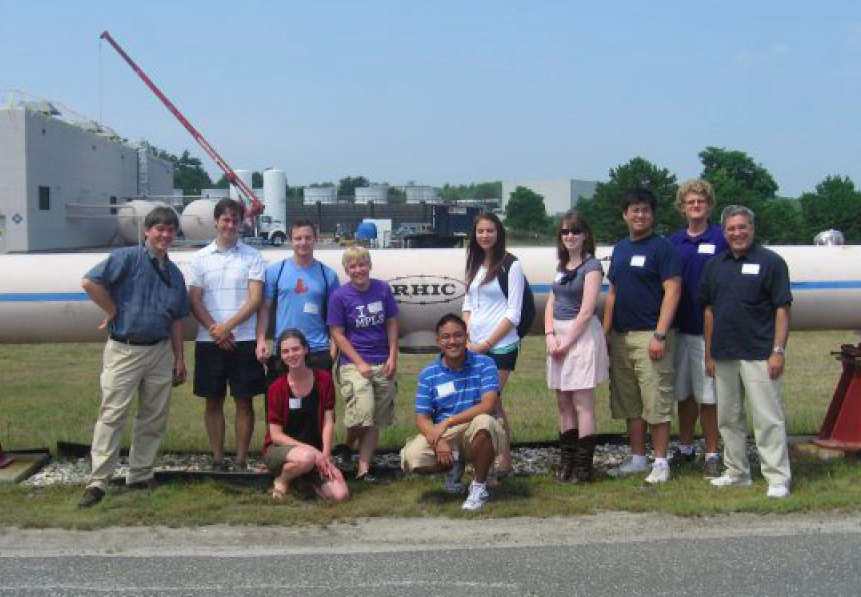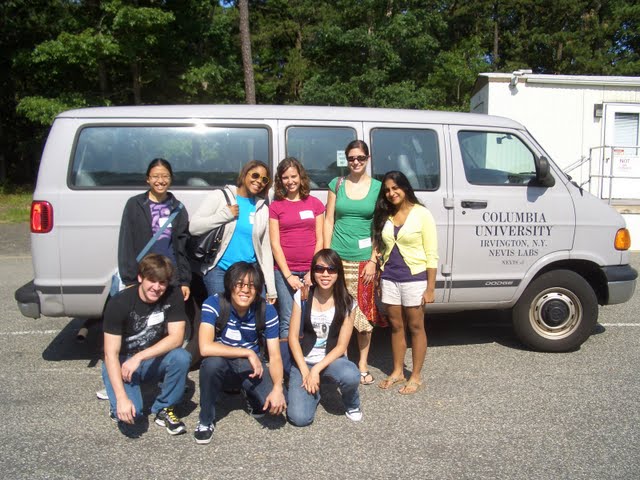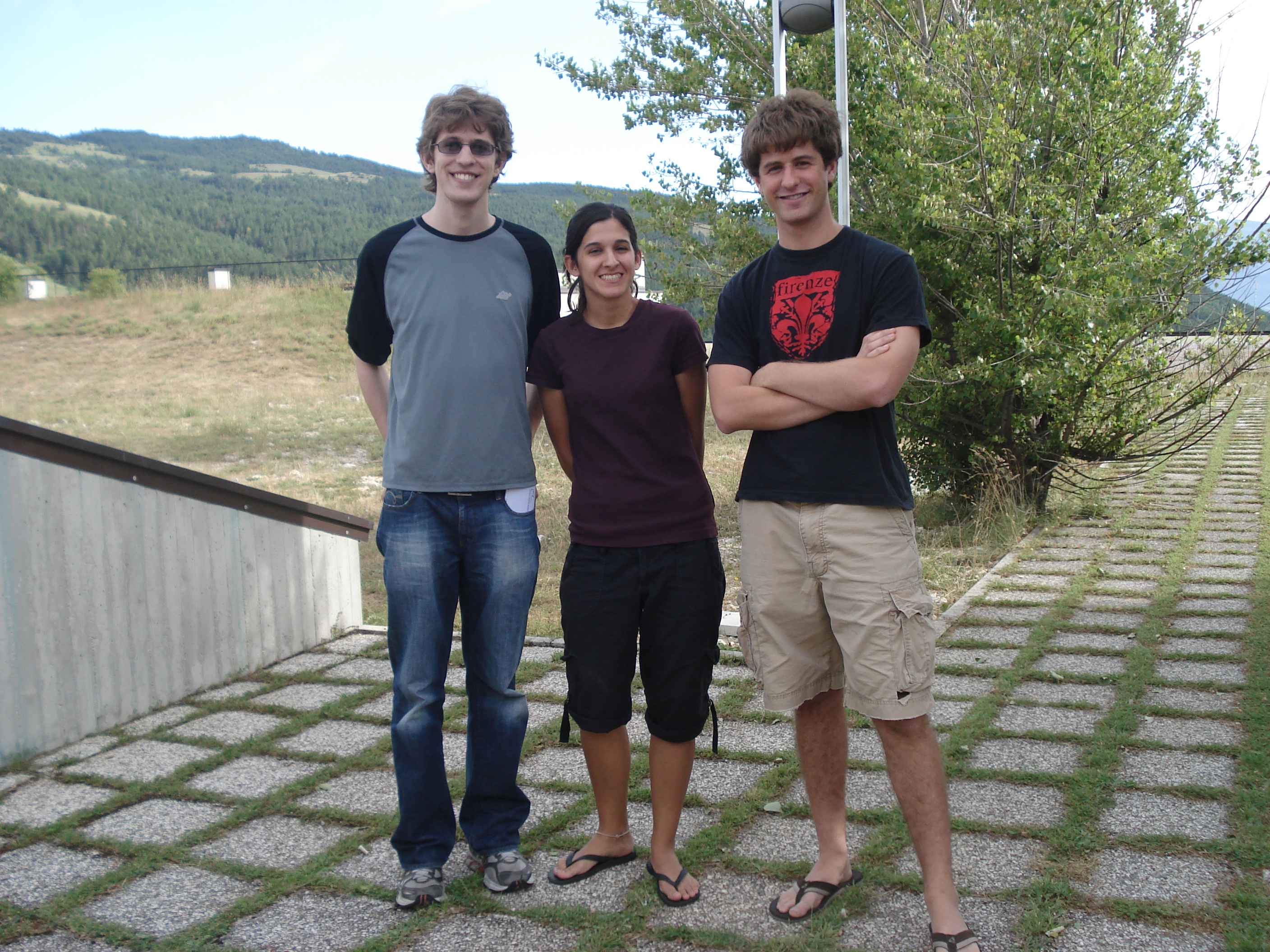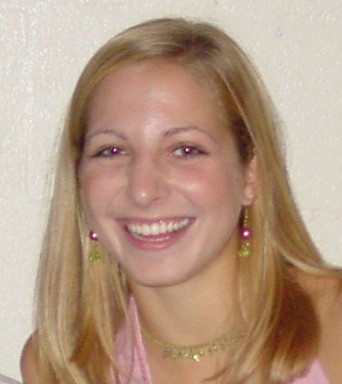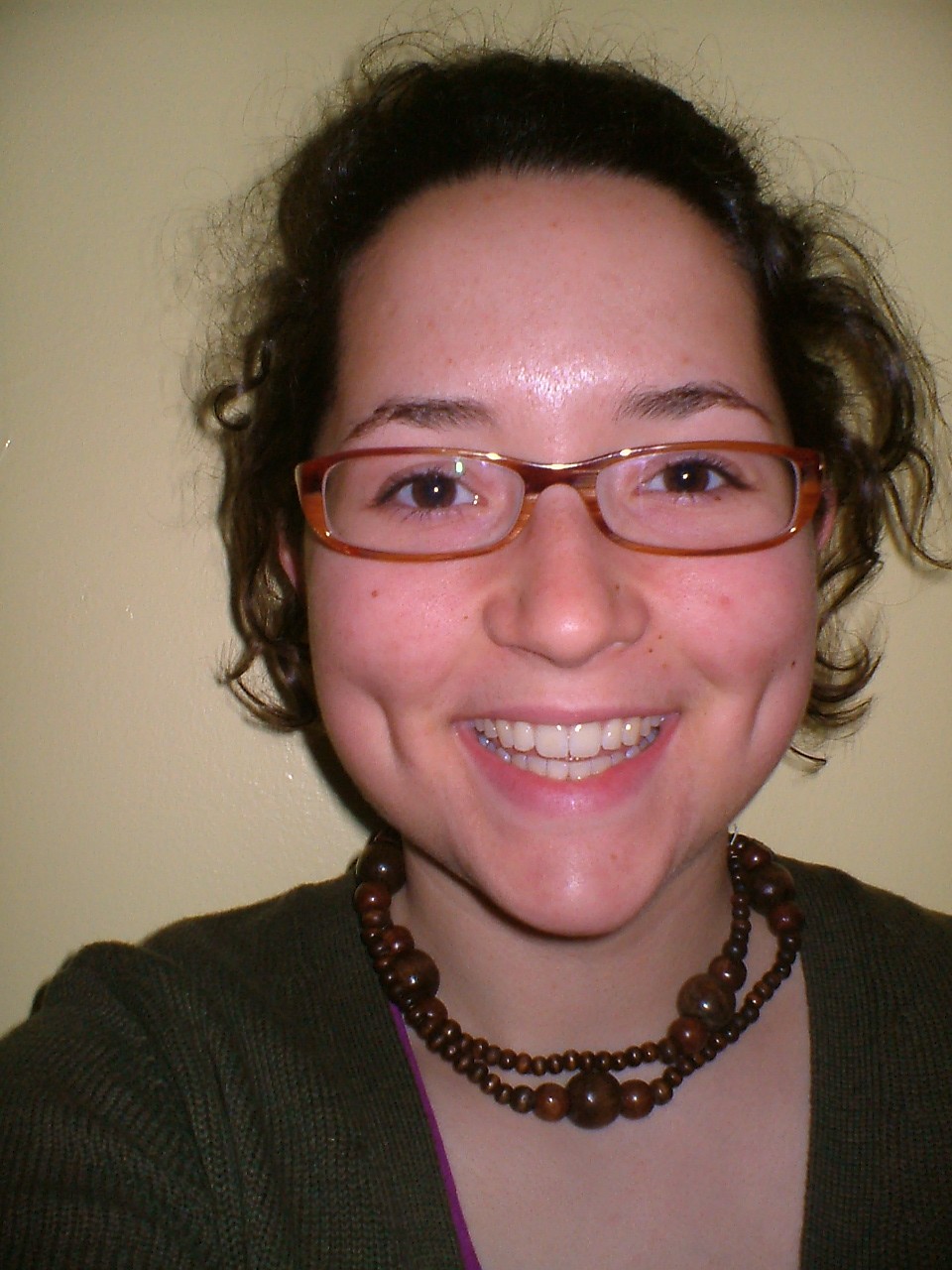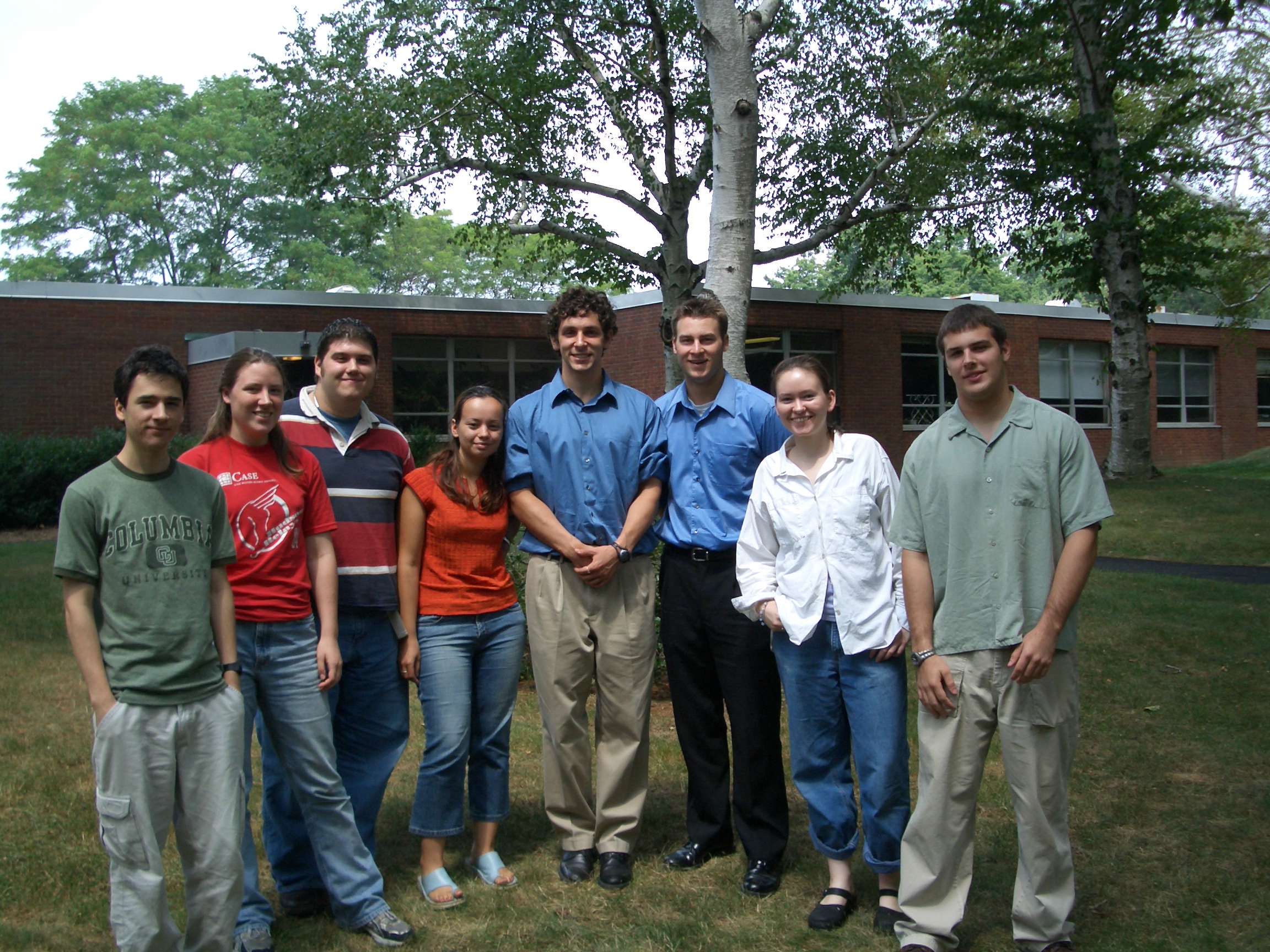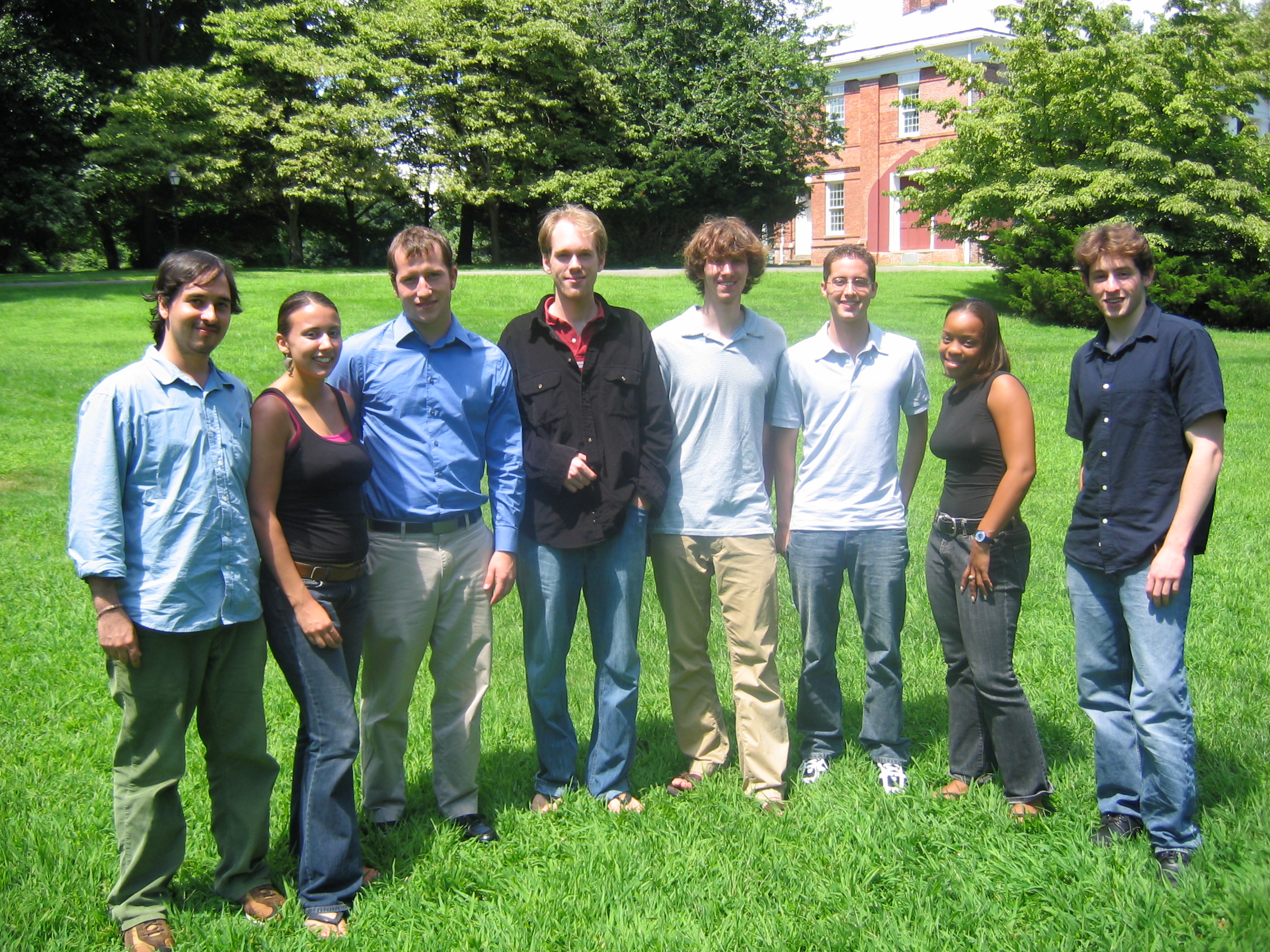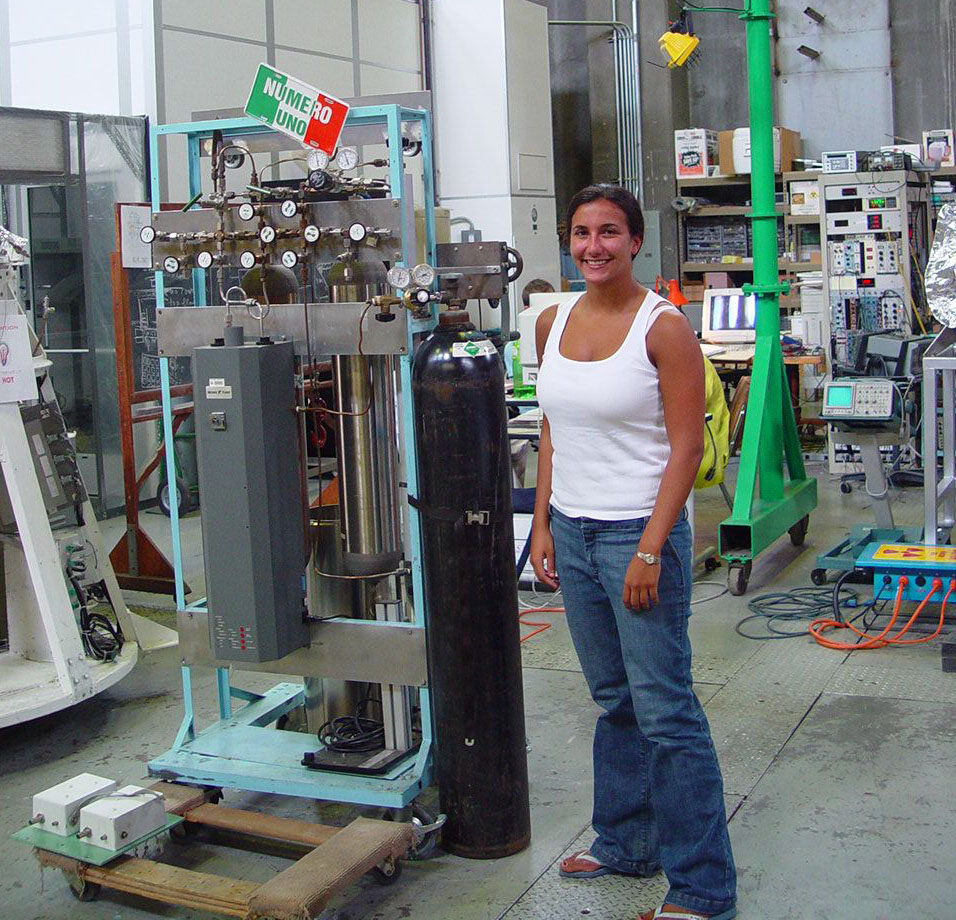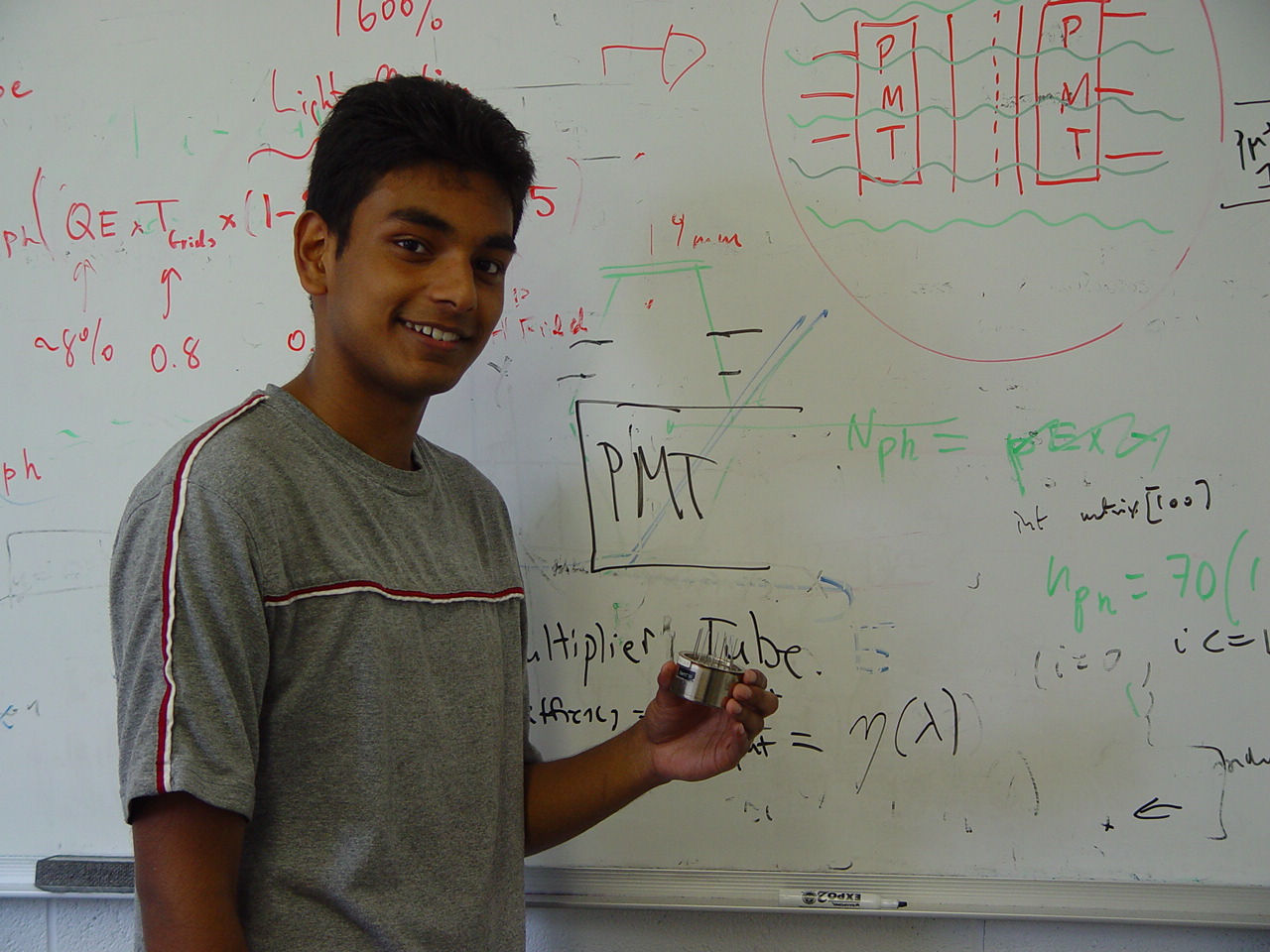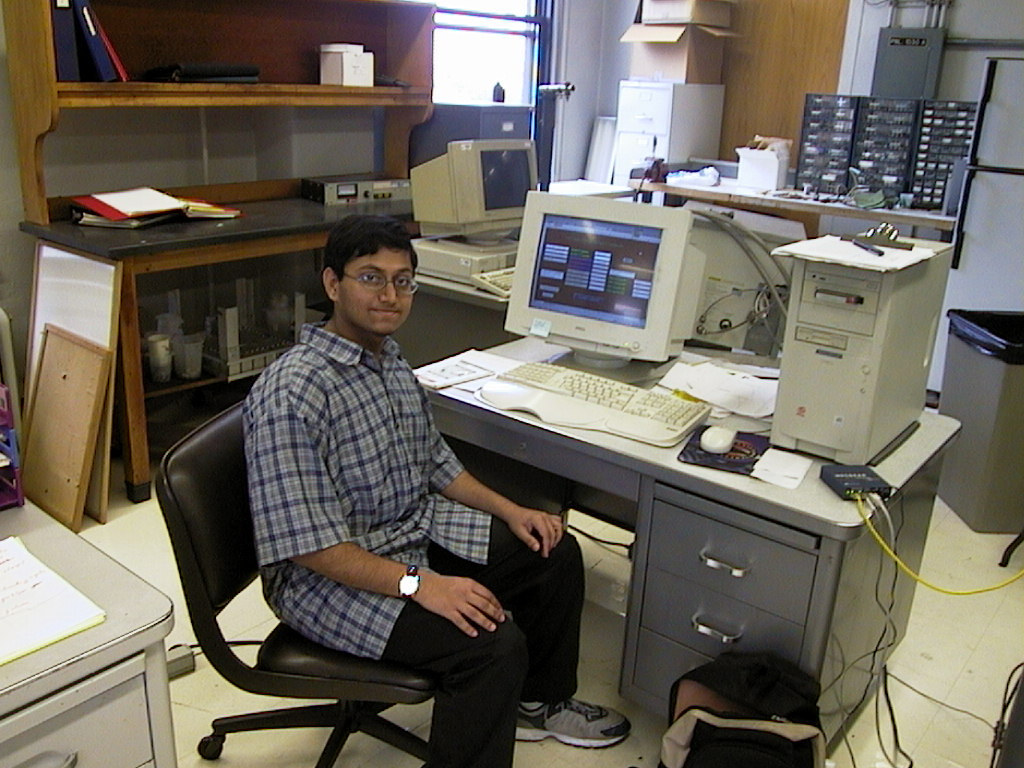Educational Outreach
2010 REU @ Nevis Labs & Main Campus
|
In the summer of 2010 four undergraduate students, Catherine Lussenhop (Cornell University, 5th from left), Vladimir Lolinco (University of North Florida, 6th from left), Christine McLean (College of William and Mary, 8th from left), and Evan Biederstedt (Columbia University, 10th from left) joined the XENON collaboration and experienced interesting 2010 summer. |
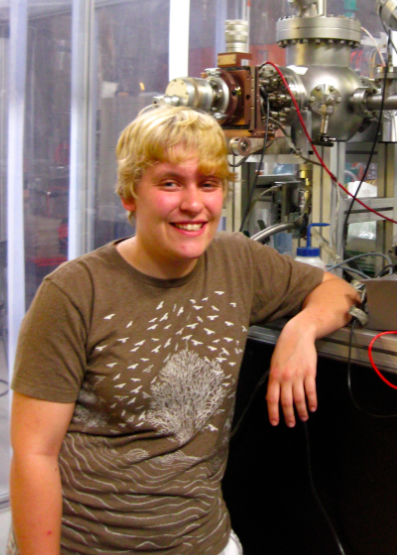 |
Catherine worked on an experiment to measure the reflective properties of PTFE in conditions similar to those in the XENON100 detector. PTFE has a high reflectivity in general, and so the XENON100 TPC is enclosed with it. This is to prevent light loss: when collisions occur, the emitted light may reflect off the inner boundary before being detected by the upper or lower arrays of PMTs. Enclosing the TPC with PTFE helps ensure that the signals are properly recorded. Though PTFE is known to have high reflectivity in general, reflectivity properties have not been investigated with xenon scintillation light at cold temperatures. The setup used to measure reflectivity consists of a deuterium light source, a monochromator, a vacuum chamber, the PTFE sample, and a PMT for detecting reflected light. The apparatus can also be used to make relative measurements of the quantum efficiency of the PMT. At the respective links, one may find Catherine's report and presentation on her summer research. |
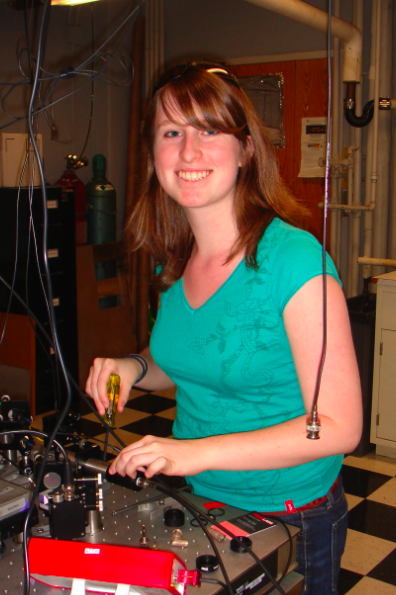 |
Christine worked on the Atom Trap Trace Analysis (ATTA) project. The ATTA is a system being designed to count the low level krypton contamination in the xenon used in the XENON Dark Matter experiment. Christine worked on developing a laser linewidth measurement system for the laser in the ATTA system. It is necessary to know the precise linewidth of the laser to ensure that it is smaller than that of the atomic transition of the krypton atoms to be trapped in the system. Christine tested and calibrated a voltage amplification device, or driver, to power a homemade Fabry-Perot interferometer. She successfully used the driver and Fabry-Perot to measure key characteristics of the interferometer and the linewidth of the laser. Christine also tested and improved upon a photodiode circuit that she set up behind the interferometer. She used the signal from the photodiode to analyze the characteristics of the laser light going through the interferometer. At the respective links, one may find Christine's presentation and paper on her summer research. |
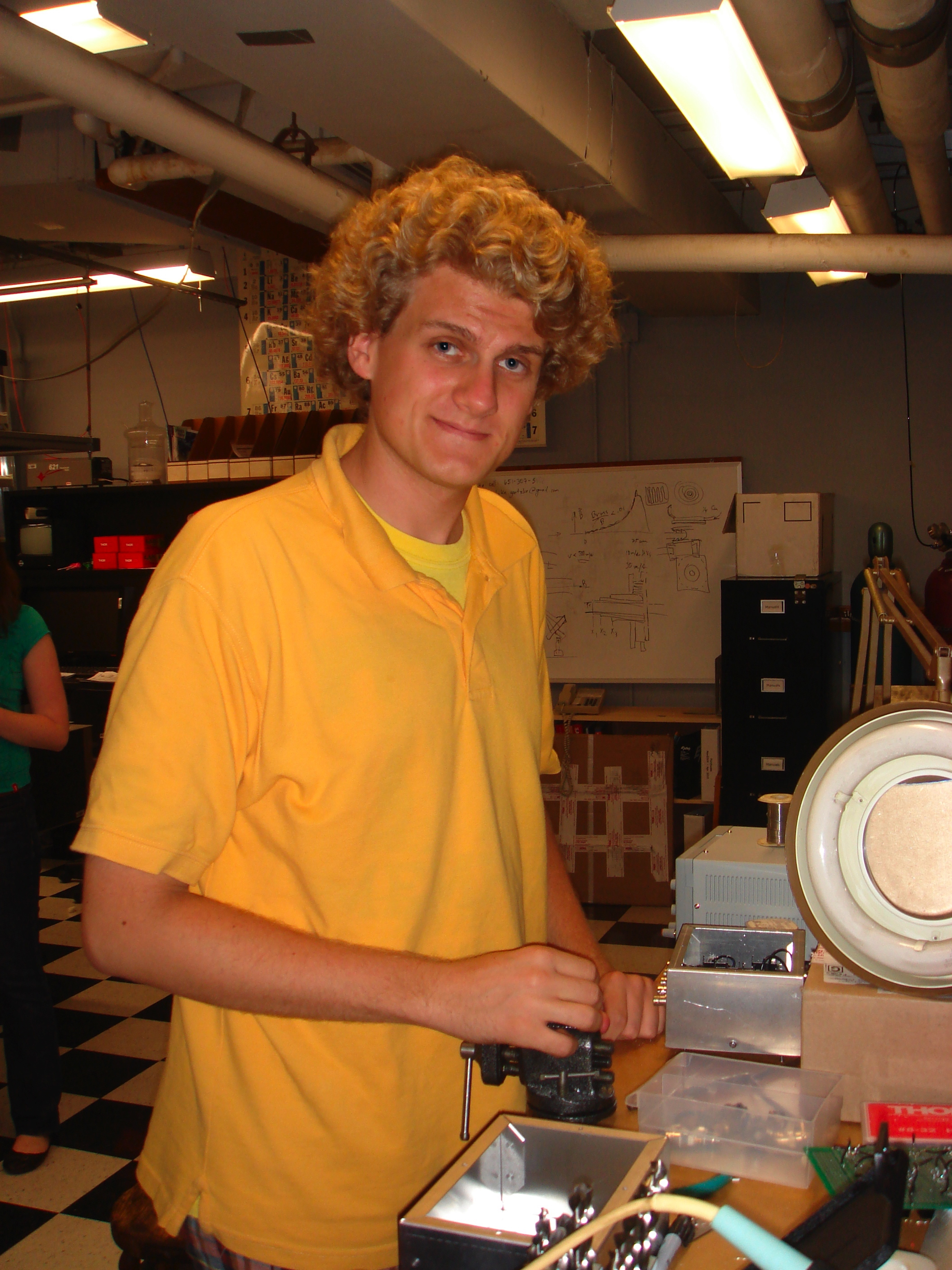 |
Evan's primary project with the ATTA during the summer was the design and construction of the anti-Helmholtz coils for the magneto-optical trap (MOT), integral to collimating and decelerating the 84Kr atomic beam. This activity was mostly comprised of modeling the optimal magnetic field necessary for the MOT and consequentially designing the solenoid and MOT assembly, i.e., the structure holding the MOT chamber and MOT coils firmly in place. The magneto-optical trap's primary function is to capture and produce cold, neutral atoms to temperatures approaching microkelvins. Atoms are initially slowed by a Zeeman slower under an ultra-high vacuum. After the atomic beam has been decelerated to a suitable velocity, the quadrupole magnetic field induced by the anti-Helmholtz coils, along with the combined effects of three orthogonal polarized laser beams in each of the Cartesian coordinates, will be powerful enough to capture atoms. Each pair of the anti-Helmholtz coils carry an equal electric current flowing in the opposite direction, which creates a magnetic field gradient, at the center of which is zero. Atoms drifting out of this center will be brought into resonance by the laser beams, i.e., said atoms absorb photons, providing the momentum necessary for atoms to return to the center of MOT chamber, hence being trapped. The design of the MOT coils required hollow, square copper wire, through which a current of water would flow. It was essential to take into account an appropriate power supply, as well as the spatial constraints of the experimental set-up during the design and construction of the MOT coils and in particular assembly structure. |
2009 REU @ Nevis Labs
|
In the summer of 2009 two undergraduate students, Emily Altiere (Bryn Mawr College, 5th from left) and Karen Chen (Boston College, 6th from left), joined the XENON collaboration and worked on the interesting topics during the 2009 summer. |
 |
Emily worked on a Compton Coincidence Technique project with two different types of detectors, NaI(Tl) and HPGe. She set two NaI(Tl) detectors up in a CCT setup such that an incoming gamma ray photon would Compton scatter in the first detector, depositing some energy, and then the scattered photon would coincidentally deposit the rest of the energy in the second detector at some angle from the incident photon. Due to the low energy resolution of NaI(Tl), the second detector was replaced with a HPGe detector afterward. The main purpose for the CCT and Xenon is to replace the first detector with liquid xenon (LXe) and be able to measure the ionization and scintillation response for charged and uncharged particles at low energies in LXe. CCT allows for the measurements of low energy deposition in a detector using a high energy source which enables to distinguish between particles when they deposit energy into the detector and exactly what that energy is. At the respective links, one may find Emiliy's report and presentation on her summer research. |
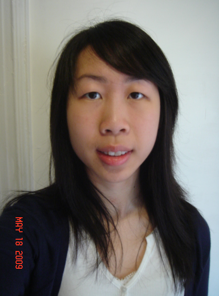 |
Karen worked on the upgraded XENON100 detector design with a specific focus on lowering the electronic recoil background levels from construction materials. Since WIMPs are very rare events (on the order of 2 events per year per 100kg of xenon) the detectors must have extremely low backgrounds. The XENON100 detector upgrade should have a factor of 100 less background with the 100kg fiducial volume. She made Monte Carlo simulations with 4 radioactive decay chains (U238, Th232, K40, and Co60) for each material for different detector geometries. She then explored different 100kg fiducial volume cuts to minimize background levels and analyzed the results to look for possible improvements to the design. At the respective links, one may find Emiliy's report and presentation on her summer research. |
2008 REU and a summer student @ LNGS, Italy
|
In the summer of 2008 three undergraduate students, Gina Buffaloe (St.Mary's University), Andrew R. Massari (University of Norte Dame), and Jason Brodsky (Harvard University), joined the XENON collaboration and worked for various topics during the 2008 summer. Gina and Andrew were part of the Summer Research Program for Undergraduates at the Nevis Labs and Jason was a undergraduate student continuing his research with XENON last year. But since XENON100 was commissioning at LNGS in Italy, all of the summer undergraduate students did their researches at LNGS. Each of them had small projects contributed to XENON project. |
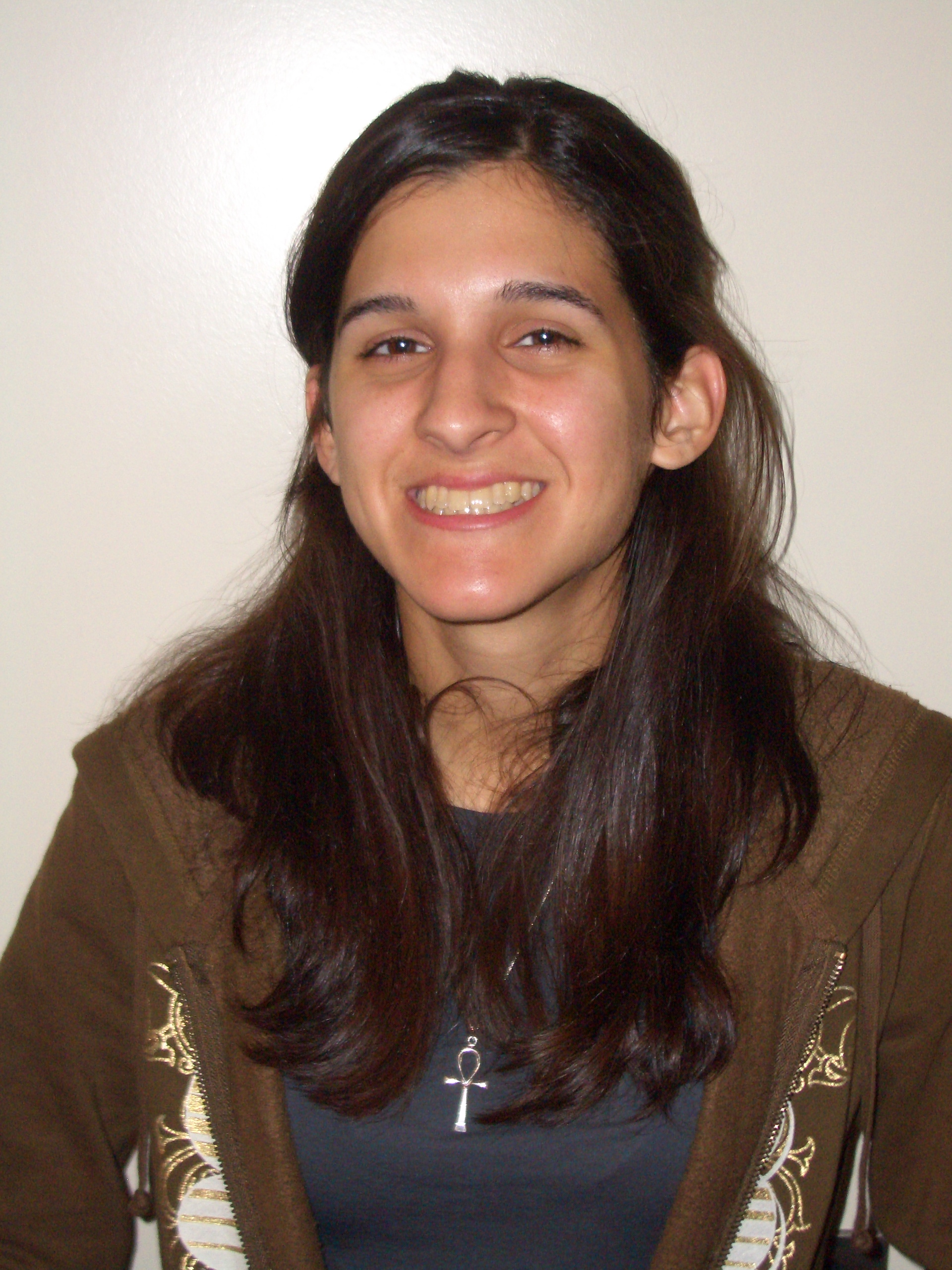 |
Gina worked on analyzing data from the Germanium detector this summer. Her aim was to measure the radioactivity contribution from selected PMT Bases. To have a clear idea of the exact radioactivities of the various detector materials is quite important to obtain accurate background level, as in all rare searches, in the direct detection of dark matter background plays a key role and largely determines the sensitivity of the experiment. At the respective links, one may find Gina's presentation and paper on her summer research. |
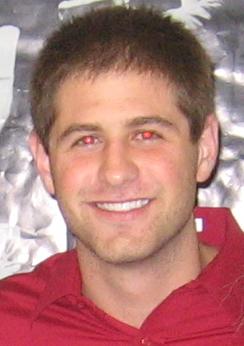 |
Andrew approached the Xenon project with PMT Gain Calibration. Precise and recurring calibration of the over 200 Photo-Multiplier Tubes is necessary to ensure accurate background rejection capabilities. He studied both initial calibration in a blackbox as well as regular maintenance calibration. At the respective links one may find Andrew's paper on his PMT Gain Calibration. |
 |
Jason worked on the XENON project's new testing detector, XeBella. XeBella contains all the dual-phase detector technology of Xenon100 in a smaller package, making it easy to use for calibration and testing. He learned and used the GEANT4 simulation package to code a simulated copy of XeBella, allowing us to determine how the many components of the real detector will affect our testing. Jason also got hands on with the detector, learning how all the apparatus fits together and building the stand seen in the photo to fit our needs. After helping with the assembly of the detector, he assisted with early tests of the cooling system. Working with a detector in its early stages was a great way to learn how physicists combine the goals of an experiment with its practical requirements to turn their ideas into functioning experiments. |
2007 REU @ Nevis Labs
|
In the summer of 2007 two undergraduate students, Juliette Alimena (UPenn) and Marc Miskin (RPI), joined the XENON collaboration for 10 weeks of intesive research on a variety of topics. Juliette and Marc were part of the Summer Research Program for Undergraduates at the Nevis Labs. Both can be seen in the adjacent picture working with liquid nitrogen while testing new APDs for the XENON10 detector. |
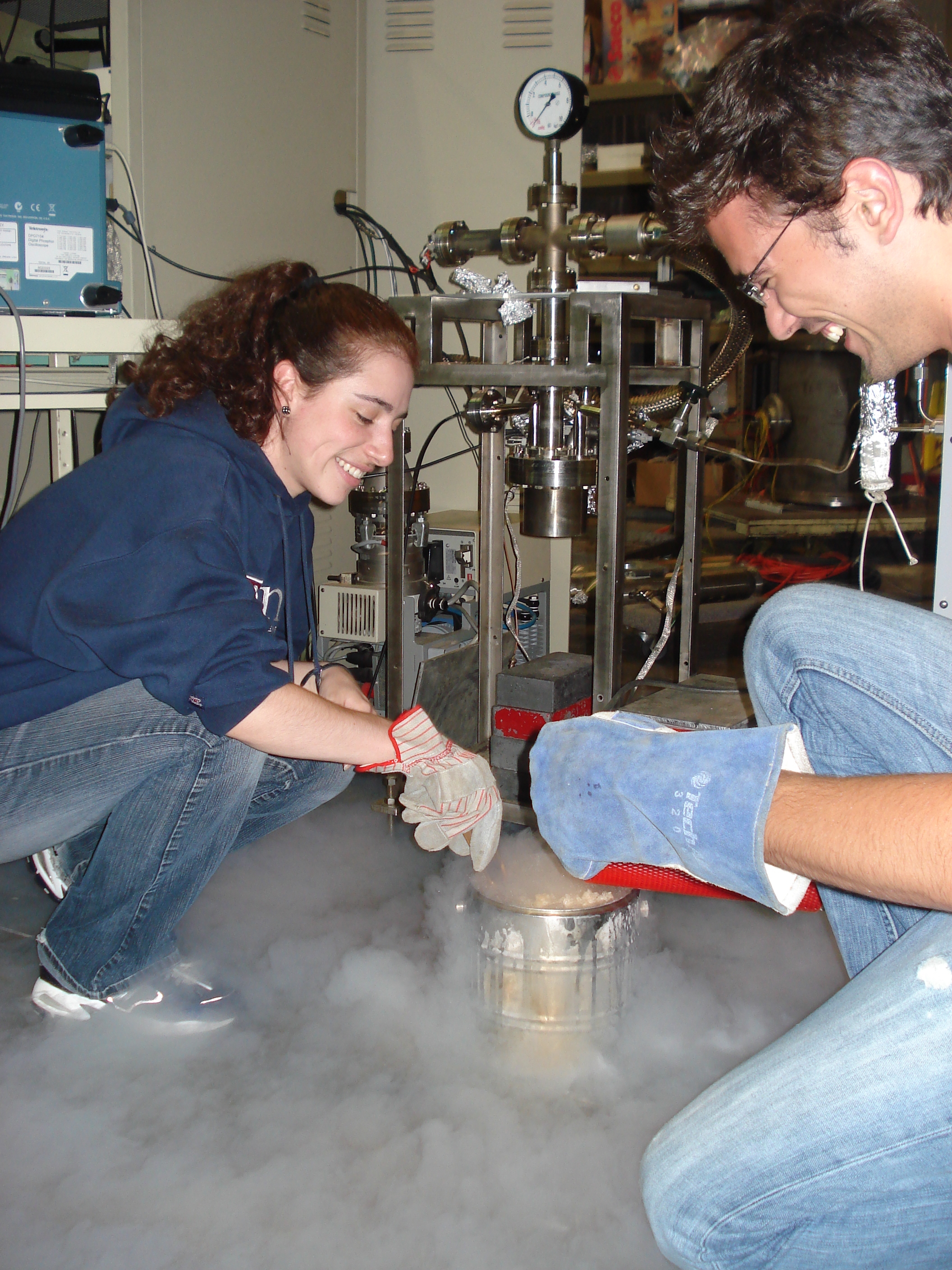 |
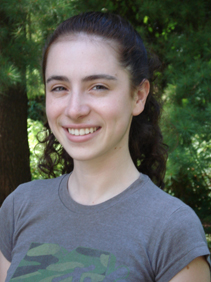 |
Juliette worked on two projects this summer. The first was to refine a Geant4 Monte Carlo simulation that has been used to characterize the light response of the XENON10 detector. This was done by varying the parameters that influence the light collection efficiency and comparing each variation to activated xenon data. The activated xenon S1 pulse reaching each PMT in the bottom array was compared to those of 12 different versions of the simulation by finding the chi-squared, and the version of the simulation that gave the lowest chi-squared value was found. Her second project was to begin tests of avalanche photodiodes in liquid and gaseous xenon, with the ultimate goal of being able to characterize their gain as a function of bias voltage and quantum efficiency. At the respective links, one may find Juliette's presentation and paper on her summer research. |
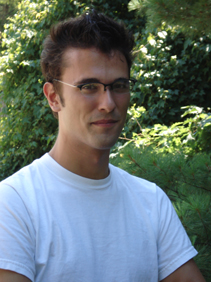 |
Marc also approached the Xenon project with a diverse scope of interests. He first developed a Neural Network to reconize multiple compton scattering events, which might otherwise produce background in the dark matter search. Next, he spent some time on adjusting the mechanical aspects of the detector by helping construct a new chasse to hold the detector in place for a neutron experiment. Finally, he worked with Juliette on testing APDs in gaseous and liquid Xenon in an effort to discover better tools for converting scintillation light into electrical charge. At the respective links one may find Marc's presentation and paper on his Neural Network. |
2006 REU
Alison Andrews from Colgate University
|
One may find Alison's presentation and paper on his summer research. |
Hannah Yevick from University of Pennsylvania
|
One may find Hannah's presentation and paper on his summer research. |
2005 REU
Marsela Jorgolli from College of DuPage
|
One may find Marsela's paper on her summer research. |
2004 REU
David Day
|
One may find David's paper on his summer research. |
2003 REU
Naomi from Columbia University
|
Naomi is a sophmore at Columbia University with a major in physics. She has been using the computer program Garfield to simulate electrons drifting through xenon. With the computer simulations she tracks the paths of electrons in a range of electric fields from one kiloVolt per centimeter to ten kV/cm. She can then compute the number of photons created by the electron--as a function of electric field and starting position--using A.I. Bolozdynya's equation (NIMA 422 p314): nph= 70(E/p-1)xp where nph is the number of photons, E is the electric field in kV/cm, p is the pressure in bar and x is the length of the path in cm. She is also analysing the electrons' drift velocity, as well as transversal and longitudinal diffusion (in comparison with experimental data) in order to calculate the total multiplication factor. email: nsk2006@columbia.edu |
Shueb from Bronx High School of Science
|
Shueb will be entering his final year at the Bronx High School of Science. This is his first such experience, and he will be studying the physics of Photo Multiplier Tubes (PMTs). The project hopes to culminate with data collection of scintillation light from liquid xenon, using an MCP-PMT. He will submit a report to the Intel Competition and various other competitions this fall. email: icepic17@yahooo.com |
Naresh Kumar from Columbia University
|
Naresh Kumar, a physics major, is a rising
sophomore studying at Columbia College. He is working primarily on: email: nk2055@columbia.edu |
